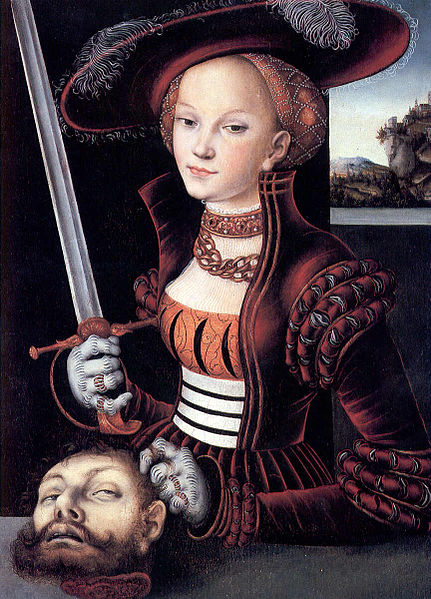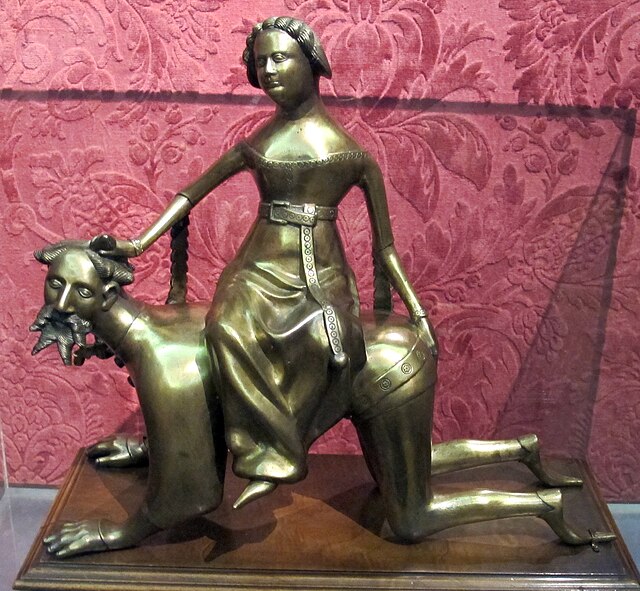The "Power of Women" is a medieval and Renaissance artistic and literary topos, showing "heroic or wise men dominated by women", presenting "an admonitory and often humorous inversion of the male-dominated sexual hierarchy". It was defined by Susan L. Smith as "the representational practice of bringing together at least two, but usually more, well-known figures from the Bible, ancient history, or romance to exemplify a cluster of interrelated themes that include the wiles of women, the power of love, and the trials of marriage". Smith argues that the topos is not simply a "straightforward manifestation of medieval antifeminism"; rather, it is "a site of contest through which conflicting ideas about gender roles could be expressed".
Judith with the Head of Holofernes by Lucas Cranach the Elder, 1530
15th-century aquamanile with Phyllis riding Aristotle
Jacopo Amigoni, Jael and Sisera, 1739
Artemisia Gentileschi, Judith Slaying Holofernes, version in Florence, 1621
Judith beheading Holofernes
The account of the beheading of Holofernes by Judith is given in the deuterocanonical Book of Judith, and is the subject of many paintings and sculptures from the Renaissance and Baroque periods. In the story, Judith, a beautiful widow, is able to enter the tent of Holofernes because of his desire for her. Holofernes was an Assyrian general who was about to destroy Judith's home, the city of Bethulia. Overcome with drink, he passes out and is decapitated by Judith; his head is taken away in a basket.
Judith slaying Holofernes by Artemisia Gentileschi, 1614–18
Cristofano Allori, Judith with the Head of Holofernes (1613)
Judith beheading Holofernes (c. 1610), by Cornelis Galle the Elder (Warsaw University Library)
Franz Stuck, Judith (1928)







